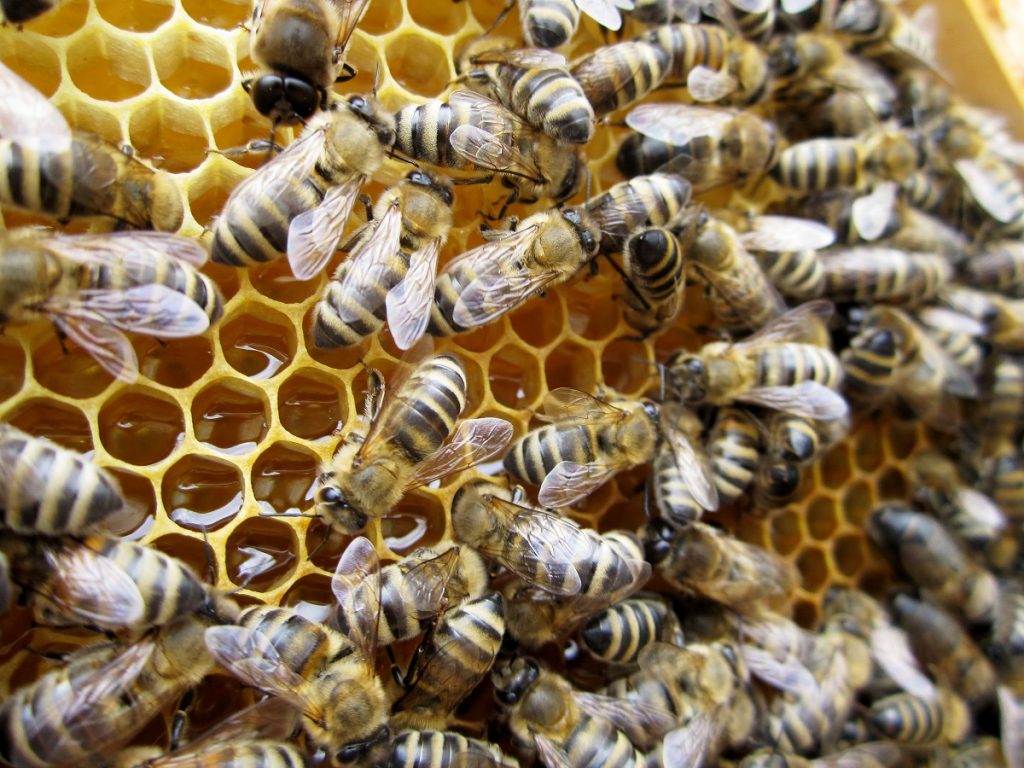Sweet, nutritious, healing, honey is one of those things that we just can’t get enough of! From honey-flavored candy to honey sticks, there are so many ways to enjoy this all-natural ingredient. What makes honey so amazing is that it is the organic product of bees; it is a necessary sustenance for these insects, especially in the winter months, with an intricate creation process.

Honey Bees
Did you know that honey making is not something that all bees do? There are many species of bees and only seven of them belong to the honey bee family. In order to make their honey, bees collect pollen and nectar from flowers and bring it back to the hive. According to researchers, worker bees make around a twelfth of a teaspoon of honey in their lifetime. This may not sound like much, but it is impressive considering how small these insects are and how short their average lifespans are (around 6 weeks). Here are some other fun facts about honey bees:
- Bees visit an average of 100 flowers in one trip to collect pollen and nectar.
- Large colonies can eat up to 200 pounds of honey in one year.
- In order to make one pound of honey, bees can travel up to 55,000 miles.
In order to survive the winter months, bees have to make and store a large amount of honey in their hive. This is why you see so many bees out during the summer. They will take advantage of the warm climate while they can in order to collect the necessary resources. Honey is especially important for feeding the young.
Honey Making
The honey that bees make is something that we use on a daily basis. Whether we’re scooping it out of a jar or popping open flavored honey sticks snacks, we directly benefit from the work that these insects do. Here is the step-by-step process of making honey, from a bee’s perspective:
- Collecting the nectar. A worker bee will search for sources of nectar within a 5-mile radius, stopping every once in a while at promising flowers. With the proboscis or tongue, the bee can remove the nectar from the flower and carry it back to the hive. The nectar mixes with a little saliva and is kept in the “honey stomach” which is a special sac within a bee’s anatomy. The bee will return to the hive once their sac is full of nectar.
- Delivering the nectar. Once worker bees return to the hive, they will pass along the nectar to house bees. In order to do this, the nectar is passed orally, which contributes to the change in PH level and enzymes. At this point in the process, there is too much water in the substance for it to be considered honey. Now, the bees must dry it out.
- Dehydrating the nectar. Bees can remove some of the water content by passing it along the line of bees. However, they will also spread this substance on the honeycomb and use their wings to fan it out. Through this process, parts of the nectar evaporate and it becomes a much thicker substance.
- Sealing the honeycomb. After enough water has evaporated from the honey, the bees will store this sustenance in the honeycomb cells. They cap each honeycomb with beeswax in order to keep the honey nice and fresh.
As you can see, the process of making honey is long and involved; it’s sacred to these creatures! So, the next time you use honey sticks for tea or enjoy it on granola, remember that it is the product of these hard-working bees.



